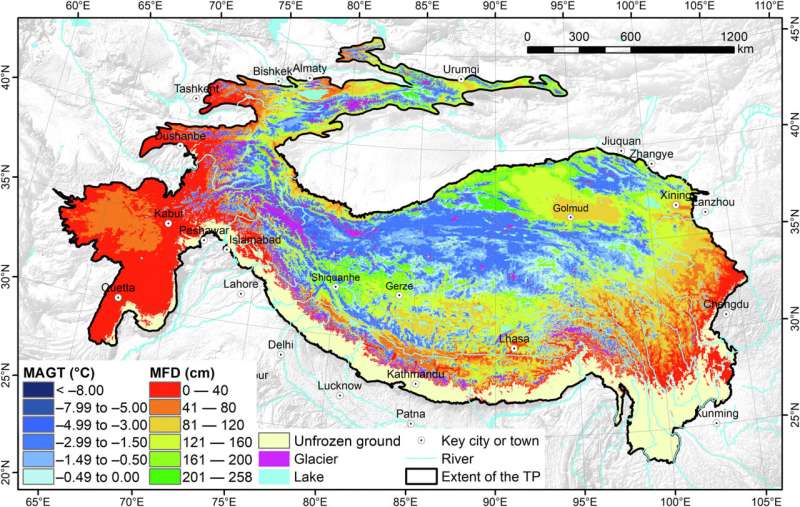Study reveals current state and past changes in frozen ground at Earth's Third Pole

Earth's Third Pole, which covers the Qinghai-Tibet Plateau, the Pamir Plateau, and the Tien Shan, includes the largest frozen ground region in the middle and low latitudes of the world.
Frozen ground, including permafrost and seasonally frozen ground, has an important impact on hydrological cycle and ecosystem productivity in this area, and even on the global climate.
Recently, researchers from the Northwest Institute of Eco-Environment and Resources of the Chinese Academy of Sciences have revealed the current state of frozen ground and its changes within the entire Third Pole during the past 60 years by reviewing existing high-quality frozen ground data products or using data-driven simulation.
Related results were published in Advances in Climate Change Research.
The researchers found that the current areal extent underlain by permafrost (permafrost area) was approximately 127x104 km2, accounting for approximately 28% of the Third Pole. The mean annual ground temperature in the permafrost area was approximately –1.51 °C, and the regional average active layer thickness was about 235 cm. The current areal extent of seasonally frozen ground was about 259x104 km2, accounting for approximately 55% of the Third Pole.
The corresponding regional average maximum frost depth was 92 cm. Both permafrost and seasonally frozen ground degraded (warmed and thawed) significantly over the past 60 years. Permafrost warmed substantially at a rate of 0.17 °C per decade, and the active layer thickness increased at a rate of 4.42 cm per decade. The maximum frost depth of seasonally frozen ground declined at a rate of 2.34 cm per decade.
More information: You-Hua Ran et al, Current state and past changes in frozen ground at the Third Pole: A research synthesis, Advances in Climate Change Research (2022). DOI: 10.1016/j.accre.2022.09.004
Provided by Chinese Academy of Sciences





















